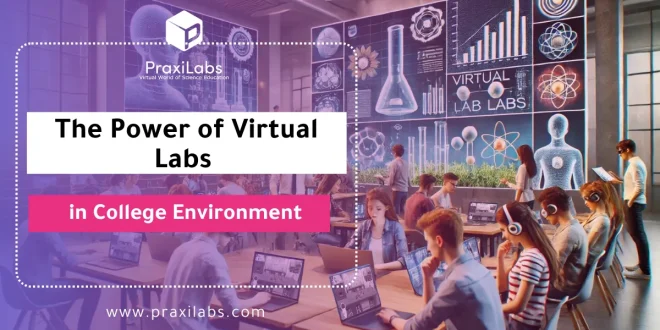Last Updated on June 1, 2025 by Muhamed Elmesery
In the educational field, technology is constantly evolving and developing, to cater to the ongoing need and demand for progress. Educational institutions need to evolve as well, to match the ever-changing needs of modern society, thus ensuring the provision of the latest methods and technologies to their students. This is where the role of virtual Lab in college Environment becomes essential.
In this blog post we will explore the vital role of virtual lab environment in college.
Table of Contents
What is The Problems of Virtual Lab in College Environment?
Educational institutions, especially science colleges face several problems when using traditional science labs in science education such as safety hazards, high costs, ethical challenges i.e. animal testing, limited access for students, lack of engagement and student interest, and high student dropout rates.
Educational institutions’ labs can no longer accommodate the large and growing number of students. Prohibitive time constraints prevent instructors and professors from providing each student with the opportunity to conduct experiments themselves in the lab. Hazardous materials and substances require careful hands and proper supervision.
Conducting scientific experiments in the laboratory requires significant time, effort, precautions and concentration to avoid exposure to any kind of danger.
As a student, researcher, or professor, you must have been exposed to one of the following situations:
- You were unable to conduct an experiment due to the lack of resources and funds.
- You needed to repeat a certain experiment more than once In order to reach a more accurate result, but you could not do so due to time constraints or lack of resources.
- You were unable to conduct a specific experiment due to its risks. Without practical application and relying solely on theory, you may struggle to fully understand and visualize the concept. and if you depend only on the theoretical side without applying it, you will not be able to understand and imagine it.
And other situations that may negatively affect the process of understanding the academic content.
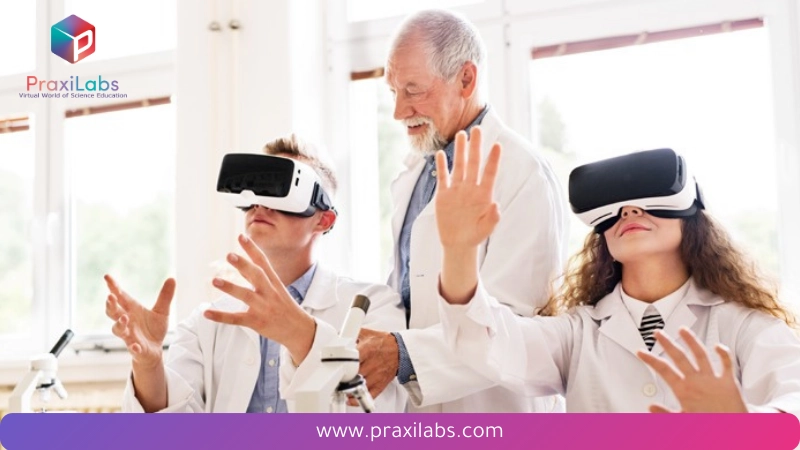
Virtual labs is the optimum solution
You may have wondered one day, what will happen with schools and universities if the COVID-19 pandemic continues? What if they have not been able to return naturally? What will happen to the practical curriculum?!
Here comes the role of virtual online science labs, which fully simulate the real laboratories needed for science students and facilitate the study process, as it is an interactive learning environment that aims to conduct and implement experiments in a way that simulates the real experience as it is a field for laboratory experimentation.
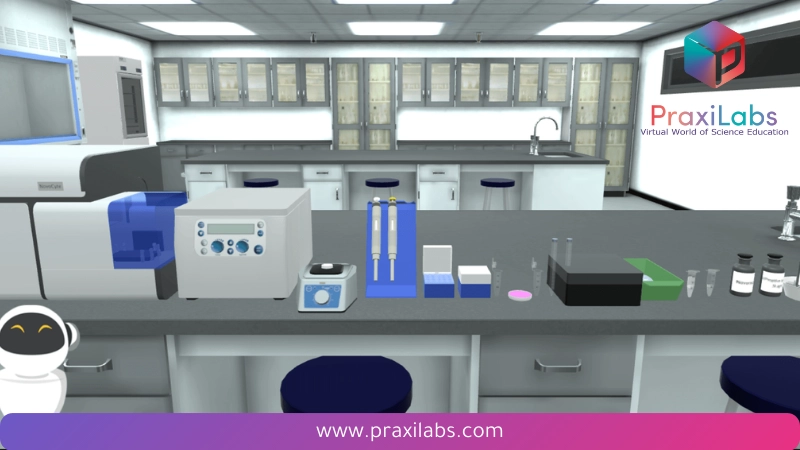
Get free online access your virtual lab simulation to immersive virtual Science labs now!
For example, after the closure of schools and universities, and the reliance on distance education labs via the internet, virtual science laboratories proved to be the best choice to cover the practical part of the study. The most important thing is that these laboratories are the best solution to the previous problems by facilitating the process of teaching science in universities as they are distinguished by the following:
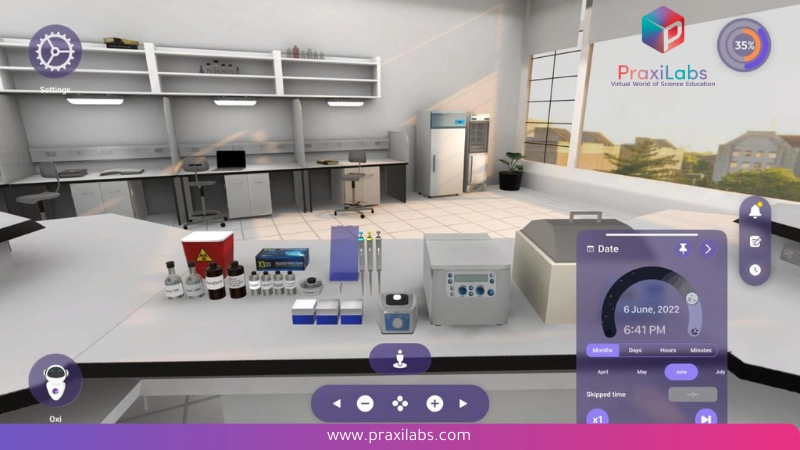
Discover the Features of Virtual Labs
Virtual Lab Reduce costs
Acquiring multiple lab devices so students can train in a physical space is more costly. In addition to the cost of maintaining these devices constantly, unlike virtual laboratory platforms, which require significantly lower expenses.
Safety Guarantee via Virtual Lab
Virtual Labs enable; learners to try all kinds of experiments without the risk of damaging equipment or injuring themselves. They can also test, compare and determine which of the different scenarios is the most effective without having to try them out in real life.
Create a realistic learning experience
It is often difficult for students to know how laboratory equipment works. they may also overlook limitations or malfunctions that could happen in a real work environment. Here comes the role of virtual labs that help build a realistic learning environment so that students get complete training and are more prepared.
Enhancing students’ confidence
Working with hazardous materials or handling heavy laboratory equipment can be intimidating. Giving them the chance to practice in a virtual, interactive lab environment before they’re being exposed to real-life work conditions is important and enhances students’ confidence.
Engaging learners
Lectures and presentations can be uninspiring when covering practical aspects, such as chemical experiments. However, you can capture learners’ attention by giving them the opportunity to test those procedures in a virtual lab. A dry theory lesson can become engaging through practical and realistic simulations of real-world scenarios.
Give unlimited time to experiment
Learners can repeat experiences many times and can even speed up the process when necessary. Virtual labs also contribute to saving the time needed to prepare the equipment and materials required to conduct the experiments.
Pick the best plan for you now!
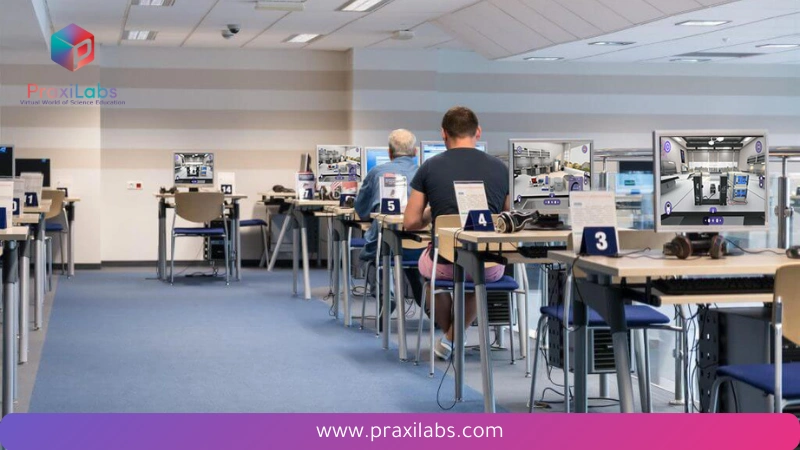
5 Facts You Should Know About Virtual Lab Environment in College
- Virtual lab in college environments are immersive and interactive simulations of e-learning science experiments and activities that typically take place in physical laboratory settings.
- A virtual lab environment is a great solution that provides students with access to realistic biology, chemistry, and physics labs and enriches their understanding with a variety of informational and educational content to enhance their understanding and learning, with the aim of providing equal opportunity for an enhanced STEM education online for students everywhere.
- Remote learning in higher education and virtual labs in college environments aim to provide an immersive and interactive learning experience that closely mirrors the hands-on nature of traditional labs, while offering the advantages of accessibility, cost-effectiveness, and safety.
- Virtual lab in college environments offer a safe environment for doing the experiments. Students can explore complex or hazardous experiments without the risk of accidents or damage to equipment.
- By adopting virtual labs, colleges and universities can significantly reduce overhead costs while still providing high-quality educational experiences. Virtual labs eliminate expenses related to physical materials and allow institutions to allocate resources more effectively.
The following table shows a comprehensive guide to compare real laboratories and virtual Laboratories:
|
Real Laboratories |
Virtual Laboratories |
|
| Accessibility | Require physical space, equipment, tools, and materials that may not be easily accessible to everyone or all institutions. | Can be accessed virtually with any device connected to the internet. Whether you are using a desktop PC, laptop,
smartphone or tablet, most virtual labs are compatible with all common devices and operating systems, with minimal memory requirements and browser capabilities. |
| Cost | Require high costs for equipment, tools, materials, supplies, maintenance, and safety measures. | Reduce these high costs, making them more affordable for educational institutions or individuals. |
| Safety | Include working with chemicals, biological agents, radioactive materials, electricity or hazardous materials, which require careful handling and proper supervision. | Virtual Labs eliminate these risks and provide guidance to learn safety precautions in a real lab and proper behavior/actions in real labs, thus saving students from potentially harmful mistakes and avoiding lab damage
and lowering costs. |
| Time Flexibility | Require scheduling and coordination of lab sessions, which can be time-consuming and rigid | Allow experiments to be accessed at any time, allowing users to learn at their own pace.
Students can practice and learn wherever they wish. With this constant availability students can better plan their day and benefit from every moment. |
| Hands-on Experience | Provide hands-on experience in using physical tools and equipment, performing techniques, and doing experiments. | Offer interactive digital simulations for colleges and virtual equipment, providing a similar level of hands-on experience, albeit in a virtual setting. |
| Real-time Feedback | Allow immediate feedback and adjustment during experiments based on real-time observations. | Can provide instant feedback, guide users through the experiment, and correct errors, which enhances the learning experience. |
| Experimental Variability | Can be affected by variations in equipment, environmental conditions, or technique proficiency, which can lead to inconsistent results. | Offer standardized conditions and predictable outcomes to ensure consistent learning experiences. |
| Collaboration and Sharing | Allow for in-person collaboration among students or researchers. | Can include features that support collaboration, such as online discussions, group projects, and data sharing, which create opportunities for interaction and teamwork. |
| Scalability | Have limitations in terms of the number of students or researchers who can use the lab simultaneously. | Can accommodate a larger number of users simultaneously, allowing for scalability and wider accessibility. |
| Authenticity | Offer an authentic experience with real-world equipment, materials, and techniques | Aim to replicate this experience as closely as possible, but they may have limitations in accurately capturing certain aspects of the real lab environment. |
| Equipment and Material Limitations | May have limitations on the availability or quantity of equipment and materials, which can restrict the number of experiments that can be performed. | Can provide a broader range of experiments and simulations that may not be feasible in a real lab due to cost or availability constraints. |
| Experiment Repetition | May have limitations on repeating experiments due to time, cost, or availability of resources. | Allow for unlimited repetition of experiments, so that students can reinforce their understanding of concepts and practice techniques. |
| Experimental Design and Control | May have limitations in controlling certain variables, or may require more careful planning and execution of experiments. | Can allow users to manipulate variables, control experimental conditions, and observe immediate results. |
| Real-world Application | Provide a direct connection between the physical world and real-world applications. Students can experience the practical aspects and challenges faced in real-life laboratory settings. | Can offer simulations of real-world situations, but the experience may not be as immersive or context-specific as a real lab. |
| Skill Development | Allow for the development of practical hands-on skills, including lab techniques, equipment handling, and safety protocols. | Can help users develop theoretical knowledge, data analysis, experimental design, and critical thinking skills. |
| Instructor Support | Involve direct interaction with instructors or lab assistants who provide guidance and support. | Can include tutorials, instructions, and even virtual assistant features to help users through the experiment, but these may not offer the same level of personalized guidance as a real lab. |
| Lab Environment | Provide a dedicated physical space for scientific exploration that fosters a lab atmosphere conducive to learning and collaboration. | Lack the physical environment but they can include social features that allow users to connect with peers and share their experiences. |
| Integration with Curriculum | Can be integrated into curricula to enhance learning outcomes. Real labs may align more closely with targeted educational goals | Can be integrated into curricula to enhance learning outcomes and offer additional resources, supplementary experiments, or opportunities for pre- and post-lab activities. |
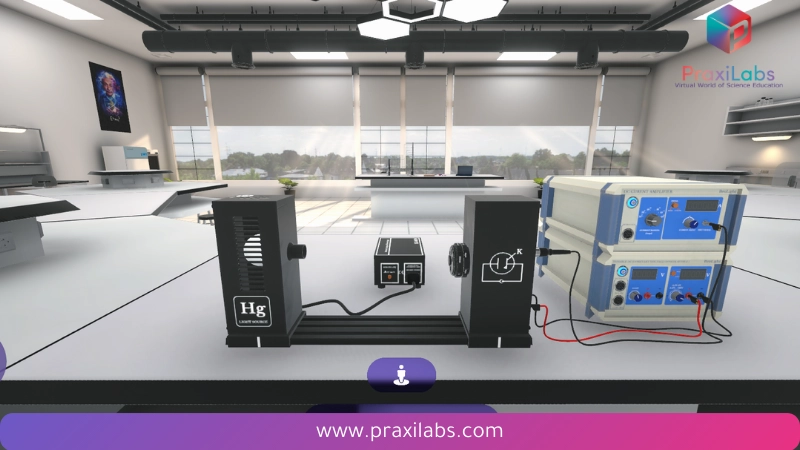
Research Using PraxiLabs | Utilizing Remote Virtual Labs to Enhance Learning and Achievement in Science
A study using PraxiLabs investigates how virtual laboratory simulation platforms can enhance learning outcomes and student engagement in experimental science courses.
The research proves that the PraxiLabs virtual chemistry lab is a valuable resource for both students and instructors, offering a variety of experiments that enhance learning through hands-on, interactive experiences.
PraxiLabs serves as a viable alternative for conventional laboratory environments in the face of budgetary and resource limitations while ensuring that students have a thorough and hands-on chemistry education.
A detailed case study on determining the concentration of silver nitrate using Fajan’s method demonstrates how virtual labs can accurately replicate difficult scientific processes, offering students a meaningful educational experience that prepares them ready for advanced scientific pursuits.
This paper highlights The practical and educational implications of integrating PraxiLabs within the chemical engineering curriculum are emphasized in this paper. Universities can overcome resource and financial constraints by utilizing virtual labs, providing students the practical experience and knowledge they need for both academic and professional success.
Request a Demo Now and enhance your Students’ Learning Retention and Engagement!
 PraxiLabs A virtual world of science
PraxiLabs A virtual world of science

